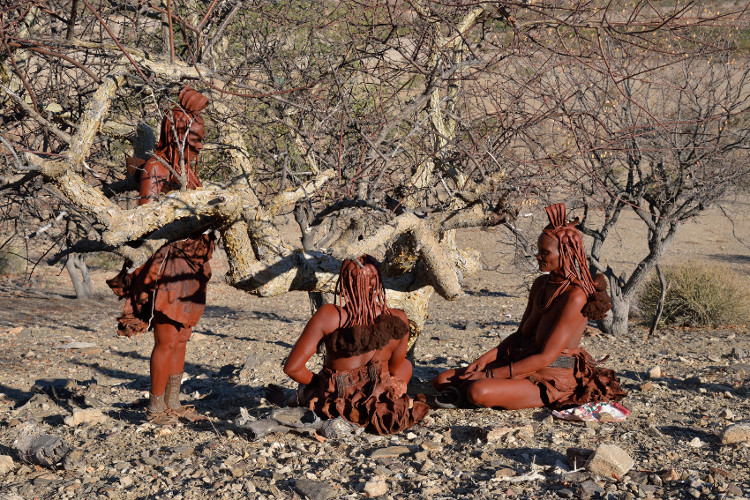In the remote Kunene region of north western Namibia, a plant conservation project has helped to generate income amongst women and to encourage sustainable harvesting from the wild. Integral Rural Development and Nature Conservation (IRDNC), is an organisation focused on community-based natural resource management in Namibia.
Women from the nomadic Himba community have traditionally collected from the succulent plant called omimbiri or Commiphora wildii. As with myrrh, to which it’s closely related, it is also the dried resin that is harvested from this desert shrub. The resin is gathered during the dry season from wild plant populations growing on the dolomitic inland cliffs on the edge of the desert.

Himba women harvesting resin of Commiphora wildii
Traditionally the resin is heated and combined with butter fat and powdered ochre to make a beauty treatment. The resin provides this paste with a lemony perfume, which women apply to their skin for its moisturising, anti-bacterial and anti-fungal properties.
IRDNC’s project has selected to work with Himba women from two conservancies to protect sustainable harvesting and local knowledge, and provide income from the commercialisation of the oils derived from the plant resin.
Women have traditionally collected the dried resin and continue to be the majority of wild collectors. The project has helped to train other harvesters and create opportunities to generate income and improve livelihoods.
An annual harvest of more than six tonnes, could be wild collected by more than 300 women. These harvesters receive direct income at the point when they bring the resin to be weighed. The resin is processed at a local pressing factory owned by a trust whose members are also harvesters.